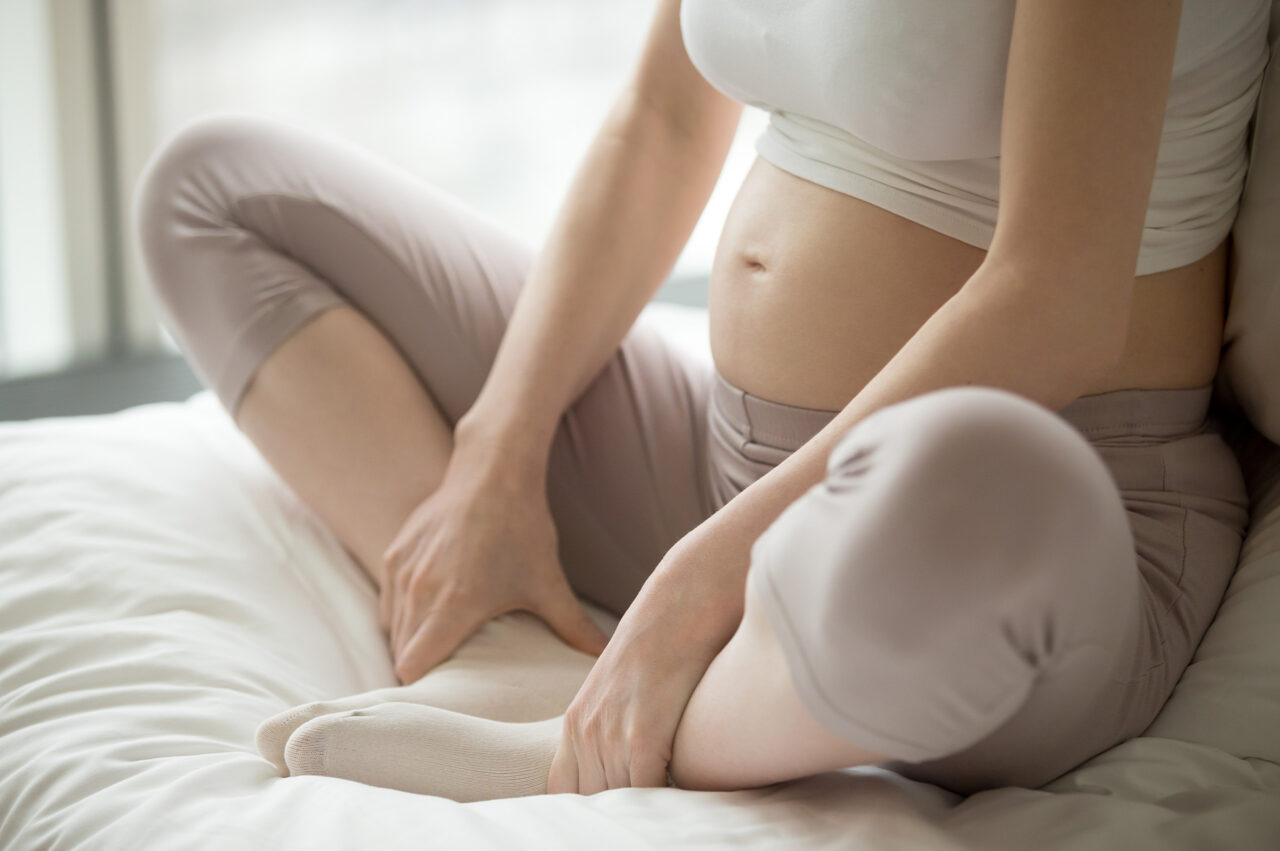Pelvic floor exercises

The pelvic floor is a set of muscular and fascial structures that extends from the pubic bone to the posterior base of the spine. Its function is to support all the pelvic organs (bladder, uterus, vagina and rectum).
A good preparation of the pelvic floor is essential to ensure proper positioning of the organs in the pelvis, good urinary and faecal continence, and optimal sexuality.
During the nine months of pregnancy, the pelvic floor has to do an important supporting job, thus becoming tighter and more rigid. It is very important that the pelvic floor muscles are relaxed and elastic at the time of delivery. A relaxed pelvic floor during labour and delivery facilitates the passage of the baby through the birth canal and prevents the risk of tearing.

In order to reduce the occurrence of problems such as incontinence, prolapse, or pain during sexual activity after birth, it is strongly recommended to start prevention from 26-28 weeks of pregnancy. Preparing the perineum also applies to caesarean sections, because pregnancy itself can also weaken these muscles.
Just exercise a few minutes a day, this will help you strengthen the muscles and prevent potential problems.
To better understand which muscles we are talking about, try holding your pee while you are in the toilet and notice which muscles you are using. On the other hand, try noticing which muscles you would use to hold in stool (imagine that you urgently need to go to the toilet when you are out and which muscles you would use to hold in). Remember that this is only a try-out to identify which muscles to use, you don’t have to do the exercises while you are in the toilet.
How to do it:
- Get comfortable in a sitting, semi-sitting or if you prefer standing position.
- Squeeze and lift your pelvic floor muscles while keeping them contracted for 10 seconds, then relax. It may be difficult at first to get to 10sec, start with a few seconds and slowly you will get there! Repeat 10 times.
- Relaxing the muscles is just as important as contracting them, so be careful not to skip this part.
- Try not to contract your buttocks or abdominals and do not hold your breath.
The most important aspect of performing good exercises is to achieve a good state of relaxation, which can be facilitated with breathing. During labour it will be helpful to remember the relaxed feeling of the pelvic muscles that you will have experienced during the exercises.
Perineal Massage
Several studies have demonstrated the effectiveness of perineal massage and confirmed that massaging the perineum (the area between the vagina and the anus) in the prenatal period reduces the risk of tearing and, in particular, the need to cut the perineum (episiotomy). This is because the more the perineum muscles and tissues are prepared to be soft and elastic, the less likely the skin will tear.
Massage is also helpful for better wound healing, less perineal pain and a shorter second stage of labour. In addition, becoming familiar with your perineum can help you to mentally prepare for the feeling of pressure and stretching that you will experience during labour.
Massage of the perineum is recommended from 36 weeks onwards.
- Wash your hands thoroughly and check that your nails are short and round.
- Sit comfortably in a warm place (the bidet for example may be comfortable or supine with your knees slightly bent). Massaging after a bath can be easier.
- Apply a natural (100% vegetable and cold-pressed), unscented oil (such as olive oil or sweet almond oil) to your hands, warm it up a little and apply it to the perineal area.
- Place your thumb (if you do it yourself) or index finger (if your partner does it) about 3 cm at the entrance to the vagina and apply pressure downwards (towards the anus) and to the sides of the perineum for at least 30 seconds per point (Fig. 2).
- Massage the area by gently rubbing the perineal tissues between your thumb (internally) and fingers (externally), from 3 o’clock to 9 o’clock back and forth (Fig. 1).
- Press down and to the sides gently until you feel a tingling sensation (Fig. 3). This sensation diminishes after a few moments.
- When you feel the tingling sensation, hold the stretch for about a minute until it subsides and start gently massaging the lower part of the vagina by moving your thumb back and forth (Fig. 4). While massaging, hook your thumb on the sides of the vagina and gently pull these tissues forward.
- Continue rubbing gently for about three to four minutes. Stop if you feel pain.




With this massage of the perineum once a day, you will notice that the area becomes more elastic and over time you will get used to the stretching sensation that occurs during birth.

